A Novel Finger Vein Recognition Method Based on Aggregation of Radon-Like Features
Abstract
1. Introduction
- First and foremost, we present a novel feature representation method of FV images, which can be used to carry out spatial aggregation and feature refinement on the noisy vein pattern images, thus obtaining more robust vein structural information.
- Second, we develop a specific implementation of RLF, and apply for FV image processing. Compared with some commonly used feature extraction methods of FV images, our proposed RLF-based method can highlight vein patterns and suppress spurious non-boundary responses and noises, thus obtaining more smoothing vein structure images.
- Third, the implemented RLF-based feature extraction method demonstrates a fast running speed and a relatively low complexity of the algorithm. The experimental results also confirm the effectiveness of our method.
2. Related Works
2.1. Mean Curvature
2.2. Radon-Like Features
3. Proposed Method
3.1. ROI Localization
3.2. Implementation of Radon-Like Features
3.3. Template Matching
4. Experimental Analysis
4.1. Finger Vein Databases
4.2. Experimental Settings and Assessment Criteria
4.2.1. Experimental Settings
4.2.2. Assessment Criteria
- False Acceptance Rate (FAR), it is the error rate where the un-enrolled FV images are accepted as enrolled images. The related formula is shown in Equation (5).where is the number of false accept, and is the number of impostor recognition attempts.
- False Rejection Rate (FRR), it is the error rate where the enrolled FV images are rejected as un-enrolled images. The related formula is shown in Equation (6).where, is the number of false reject, and is the number of genuine recognition attempts. Taking each finger as one class, if there are n number of finger classes, and each finger class has m number of images. will be , and will be .
- Equal Error Rate (EER), it is defined as the ratio of trials in which the FAR is equal to the FRR. However, there may not exist a threshold such that FAR is exactly equal to FRR in practice, because FAR and FRR are both discrete values. In this case, we adopted an approximate calculation method for EER. Concretely, the EER is calculated as follows: First, let T be a set of threshold values, which are sampled from 0 to (since the match ratio is in the range of ) with a sampling interval of , namely . In this case, there are 5001 elements in set T. Supposing is the i-th threshold of T, with . If the match ratio is lower than the predefined threshold , the claimant will be accepted, otherwise, the claimant is rejected. Therefore, we can obtain a couple of and for each threshold . When the threshold is varied from 0 to , the corresponding will be reduced and will be increased. Finally, the EER can be obtained by calculating when is minimized.
4.3. Analysis on the Margin Parameters
4.4. Quantitative Comparison of Matching Performance
4.5. Visual Assessment of Matching Performance
- In the fourth row of Figure 12, the adopted Gabor filters [60] contained three scales (wavelength is set to 16, 17, 18) and eight orientations (from 22.5° to 180° with equal intervals), thus a total of 24 filters. The final result was obtained by taking the minimum value of all filters. However, the results seem poor, which is due to the fact that the method of the Gabor filter is sensitive to the threshold values, maybe a different threshold value would bring a better result.
- Finally, as shown in the last row of Figure 12, our proposed RLF-based method obtained more continuous vein lines, that is, some breaking points, which existed in the result of the mean curvature method, have been connected, thus obtain more complete and enhanced vein patterns.
4.6. Time Analysis
5. Conclusions
Author Contributions
Funding
Institutional Review Board Statement
Informed Consent Statement
Data Availability Statement
Acknowledgments
Conflicts of Interest
References
- Hashimoto, J. Finger Vein Authentication Technology and Its Future. In Proceedings of the 2006 Symposium on VLSI Circuits, 2006, Digest of Technical Papers, Honolulu, HI, USA, 15–17 June 2006; pp. 5–8. [Google Scholar]
- Mulyono, D.; Jinn, H.S. A study of finger vein biometric for personal identification. In Proceedings of the 2008 International Symposium on Biometrics and Security Technologies, Isalambad, Pakistan, 23–24 April 2008; pp. 1–8. [Google Scholar]
- Rida, I.; Al-Maadeed, N.; Al-Maadeed, S.; Bakshi, S. A comprehensive overview of feature representation for biometric recognition. Multimed. Tools Appl. 2020, 79, 4867–4890. [Google Scholar] [CrossRef]
- Lu, Y.; Yang, G.; Yin, Y.; Zhou, L. A Survey of Finger Vein Recognition. In Proceedings of the Chinese Conference on Biometric Recognition, Shenyang, China, 7–9 November 2014; pp. 234–243. [Google Scholar]
- Mohsin, A.H.; Zaidan, A.A.; Zaidan, B.B.; Albahri, O.S.; Bin Ariffin, S.A.; Alemran, A.; Enaizan, O.; Shareef, A.H.; Jasim, A.N.; Jalood, N.S.; et al. Finger Vein Biometrics: Taxonomy Analysis, Open Challenges, Future Directions, and Recommended Solution for Decentralised Network Architectures. IEEE Access 2020, 8, 9821–9845. [Google Scholar] [CrossRef]
- Lu, J.; Liong, V.E.; Zhou, X.; Zhou, J. Learning Compact Binary Face Descriptor for Face Recognition. IEEE Trans. Pattern Anal. Mach. Intell. 2015, 37, 2041–2056. [Google Scholar] [CrossRef]
- Lu, J.; Liong, V.E.; Zhou, J. Simultaneous Local Binary Feature Learning and Encoding for Homogeneous and Heterogeneous Face Recognition. IEEE Trans. Pattern Anal. Mach. Intell. 2018, 40, 1979–1993. [Google Scholar] [CrossRef]
- Fredembach, C.; Schroder, M.; Susstrunk, S. Eigenregions for image classification. IEEE Trans. Pattern Anal. Mach. Intell. 2004, 26, 1645–1649. [Google Scholar] [CrossRef] [PubMed]
- Zuo, W.; Zhang, D.; Wang, K. Bidirectional PCA with assembled matrix distance metric for image recognition. IEEE Trans. Syst. Man Cybern. Part B 2006, 36, 863–872. [Google Scholar]
- Xu, X.; Li, J.; Wu, C.; Plaza, A. Regional clustering-based spatial preprocessing for hyperspectral unmixing. Remote Sens. Environ. 2018, 204, 333–346. [Google Scholar] [CrossRef]
- Lee, E.C.; Lee, H.C.; Park, K.R. Finger vein recognition using minutia-based alignment and local binary pattern-based feature extraction. Int. J. Imaging Syst. Technol. 2009, 19, 179–186. [Google Scholar] [CrossRef]
- Rosdi, B.A.; Shing, C.W.; Suandi, S.A. Finger Vein Recognition Using Local Line Binary Pattern. Sensors 2011, 11, 11357–11371. [Google Scholar] [CrossRef]
- Lee, E.C.; Jung, H.; Kim, D. New Finger Biometric Method Using Near Infrared Imaging. Sensors 2011, 11, 2319–2333. [Google Scholar] [CrossRef] [PubMed]
- Meng, X.; Yang, G.; Yin, Y.; Xiao, R. Finger Vein Recognition Based on Local Directional Code. Sensors 2012, 12, 14937–14952. [Google Scholar] [CrossRef]
- Yang, G.; Xi, X.; Yin, Y. Finger Vein Recognition Based on a Personalized Best Bit Map. Sensors 2012, 12, 1738–1757. [Google Scholar] [CrossRef] [PubMed]
- Dong, L.; Yang, G.; Yin, Y.; Liu, F.; Xi, X. Finger vein verification based on a personalized best patches map. In Proceedings of the 2014 IEEE International Joint Conference on Biometrics (IJCB), Clearwater, FL, USA, 29 September–2 October 2014. [Google Scholar]
- Xi, X.; Yang, L.; Yin, Y. Learning discriminative binary codes for finger vein recognition. Pattern Recognit. 2017, 66, 26–33. [Google Scholar] [CrossRef]
- Liu, H.; Yang, L.; Yang, G.; Yin, Y. Discriminative Binary Descriptor for Finger Vein Recognition. IEEE Access 2018, 6, 5795–5804. [Google Scholar] [CrossRef]
- Liu, H.; Yang, G.; Yang, L.; Kun, S.U.; Yin, Y. Anchor-based manifold binary pattern for finger vein recognition. Sci. China 2019, 62, 129–144. [Google Scholar] [CrossRef]
- Hu, N.; Ma, H.; Zhan, T. Finger vein biometric verification using block multi-scale uniform local binary pattern features and block two-directional two-dimension principal component analysis. Optik 2020, 208, 163664. [Google Scholar] [CrossRef]
- Yang, W.; Huang, X.; Zhou, F.; Liao, Q. Comparative competitive coding for personal identification by using finger vein and finger dorsal texture fusion. Inf. Sci. 2014, 268, 20–32. [Google Scholar] [CrossRef]
- Wu, J.D.; Liu, C.T. Finger-vein pattern identification using principal component analysis and the neural network technique. Expert Syst. Appl. 2011, 38, 5423–5427. [Google Scholar] [CrossRef]
- Wu, J.D.; Liu, C.T. Finger-vein pattern identification using SVM and neural network technique. Expert Syst. Appl. 2011, 38, 14284–14289. [Google Scholar] [CrossRef]
- Yang, G.; Xi, X.; Yin, Y. Finger Vein Recognition Based on (2D)2 PCA and Metric Learning. J. Biomed. Biotechnol. 2012, 2012, 324249. [Google Scholar] [CrossRef]
- Liu, F.; Yin, Y.; Yang, G.; Dong, L.; Xi, X. Finger vein recognition with superpixel-based features. In Proceedings of the IEEE International Joint Conference on Biometrics, Clearwater, FL, USA, 29 September–2 October 2014; pp. 1–8. [Google Scholar]
- Miura, N.; Nagasaka, A.; Miyatake, T. Feature extraction of finger-vein patterns based on repeated line tracking and its application to personal identification. Mach. Vis. Appl. 2004, 15, 194–203. [Google Scholar] [CrossRef]
- Huang, B.; Dai, Y.; Li, R.; Tang, D.; Li, W. Finger-Vein Authentication Based on Wide Line Detector and Pattern Normalization. In Proceedings of the 2010 20th International Conference on Pattern Recognition, Istanbul, Turkey, 23–26 August 2010; pp. 1269–1272. [Google Scholar]
- Miura, N.; Nagasaka, A.; Miyatake, T. Extraction Of Finger-vein Patterns Using Maximum Curvature Points In Image Profiles. IEICE Trans. Inf. Syst. 2007, e90-d, 1185–1194. [Google Scholar] [CrossRef]
- Choi, J.H.; Song, W.; Kim, T.; Lee, S.R.; Kim, H.C. Finger vein extraction using gradient normalization and principal curvature. Proc. SPIE Int. Soc. Opt. Eng. 2009, 7251, 725111. [Google Scholar]
- Song, W.; Kim, T.; Kim, H.C.; Choi, J.H.; Kong, H.J.; Lee, S.R. A finger-vein verification system using mean curvature. Pattern Recognit. Lett. 2011, 32, 1541–1547. [Google Scholar] [CrossRef]
- Qin, H.; Qin, L.; Xue, L.; He, X.; Yu, C.; Liang, X. Finger-Vein Verification Based on Multi-Features Fusion. Sensors 2013, 13, 15048–15067. [Google Scholar] [CrossRef]
- Boucherit, I.; Zmirli, M.O.; Hentabli, H.; Rosdi, B.A. Finger vein identification using deeply-fused Convolutional Neural Network. J. King Saud Univ. Comput. Inf. Sci. 2020. [Google Scholar] [CrossRef]
- Das, R.; Piciucco, E.; Maiorana, E.; Campisi, P. Convolutional Neural Network for Finger-Vein-Based Biometric Identification. IEEE Trans. Inf. Forensics Secur. 2019, 14, 360–373. [Google Scholar] [CrossRef]
- Avci, A.; Kocakulak, M.; Acir, N. Convolutional Neural Network Designs for Finger-vein-based Biometric Identification. In Proceedings of the 2019 11th International Conference on Electrical and Electronics Engineering (ELECO), Bursa, Turkey, 28–30 November 2019; pp. 580–584. [Google Scholar]
- Ahmad Radzi, S.; Khalil-Hani, M.; Bakhteri, R. Finger-vein biometric identification using convolutional neural network. Turk. J. Electr. Eng. Comput. Sci. 2016, 24, 1863–1878. [Google Scholar] [CrossRef]
- Wu, X.; He, R.; Sun, Z.; Tan, T. A Light CNN for Deep Face Representation with Noisy Labels. IEEE Trans. Inf. Forensics Secur. 2018, 13, 2884–2896. [Google Scholar] [CrossRef]
- Schroff, F.; Kalenichenko, D.; Philbin, J. FaceNet: A unified embedding for face recognition and clustering. In Proceedings of the 2015 IEEE Conference on Computer Vision and Pattern Recognition (CVPR), Boston, MA, USA, 7–12 June 2015; pp. 815–823. [Google Scholar]
- Xie, C.; Kumar, A. Finger vein identification using Convolutional Neural Network and supervised discrete hashing. Pattern Recognit. Lett. 2019, 119, 148–156. [Google Scholar] [CrossRef]
- Fang, Y.; Wu, Q.; Kang, W. A novel finger vein verification system based on two-stream convolutional network learning. Neurocomputing 2018, 290, 100–107. [Google Scholar] [CrossRef]
- Hong, H.G.; Lee, M.B.; Park, K.R. Convolutional Neural Network-Based Finger-Vein Recognition Using NIR Image Sensors. Sensors 2017, 17, 1297. [Google Scholar] [CrossRef] [PubMed]
- Huang, H.; Liu, S.; Zheng, H.; Ni, L.; Zhang, Y.; Li, W. DeepVein: Novel finger vein verification methods based on Deep Convolutional Neural Networks. In Proceedings of the 2017 IEEE International Conference on Identity, Security and Behavior Analysis (ISBA), New Delhi, India, 22–24 February 2017; pp. 1–8. [Google Scholar]
- Wang, J.; Pan, Z.; Wang, G.; Li, M.; Li, Y. Spatial Pyramid Pooling of Selective Convolutional Features for Vein Recognition. IEEE Access 2018, 6, 28563–28572. [Google Scholar] [CrossRef]
- Wan, K.; Min, S.J.; Ryoung, P.K. Multimodal Biometric Recognition Based on Convolutional Neural Network by the Fusion of Finger-Vein and Finger Shape Using Near-Infrared (NIR) Camera Sensor. Sensors 2018, 18, 2296. [Google Scholar]
- Fairuz, S.; Habaebi, M.H.; Elsheikh, E.M.A. Finger Vein Identification Based On Transfer Learning of AlexNet. In Proceedings of the 2018 7th International Conference on Computer and Communication Engineering (ICCCE), Kuala Lumpur, Malaysia, 19–20 September 2018; pp. 465–469. [Google Scholar]
- Qin, H.; El-Yacoubi, M.A. Deep Representation-Based Feature Extraction and Recovering for Finger-Vein Verification. IEEE Trans. Inf. Forensics Secur. 2017, 12, 1816–1829. [Google Scholar] [CrossRef]
- Tang, S.; Zhou, S.; Kang, W.; Wu, Q.; Deng, F. Finger vein verification using a Siamese CNN. IET Biom. 2019, 8, 306–315. [Google Scholar] [CrossRef]
- Kamaruddin, N.M.; Rosdi, B.A. A New Filter Generation Method in PCANet for Finger Vein Recognition. IEEE Access 2019, 7, 132966–132978. [Google Scholar] [CrossRef]
- Genovese, A.; Piuri, V.; Plataniotis, K.N.; Scotti, F. PalmNet: Gabor-PCA Convolutional Networks for Touchless Palmprint Recognition. IEEE Trans. Inf. Forensics Secur. 2019, 14, 3160–3174. [Google Scholar] [CrossRef]
- Hou, B.; Yan, R. Convolutional Autoencoder Model for Finger-Vein Verification. IEEE Trans. Instrum. Meas. 2020, 69, 2067–2074. [Google Scholar] [CrossRef]
- Gumusbas, D.; Yildirim, T.; Kocakulak, M.; Acir, N. Capsule Network for Finger-Vein-based Biometric Identification. In Proceedings of the 2019 IEEE Symposium Series on Computational Intelligence (SSCI), Xiamen, China, 6–9 December 2019; pp. 437–441. [Google Scholar]
- Song, J.M.; Kim, W.; Park, K.R. Finger-Vein Recognition Based on Deep DenseNet Using Composite Image. IEEE Access 2019, 7, 66845–66863. [Google Scholar] [CrossRef]
- Noh, K.J.; Choi, J.; Hong, J.S.; Park, K.R. Finger-Vein Recognition Based on Densely Connected Convolutional Network Using Score-Level Fusion With Shape and Texture Images. IEEE Access 2020, 8, 96748–96766. [Google Scholar] [CrossRef]
- Jalilian, E.; Uhl, A. Finger-vein recognition using deep fully convolutional neural semantic segmentation networks: The impact of training data. In Proceedings of the 2018 IEEE International Workshop on Information Forensics and Security (WIFS), Hong Kong, China, 11–13 December 2018; pp. 1–8. [Google Scholar]
- Zeng, J.; Wang, F.; Deng, J.; Qin, C.; Zhai, Y.; Gan, J.; Piuri, V. Finger Vein Verification Algorithm Based on Fully Convolutional Neural Network and Conditional Random Field. IEEE Access 2020, 8, 65402–65419. [Google Scholar] [CrossRef]
- Yang, W.; Hui, C.; Chen, Z.; Xue, J.; Liao, Q. FV-GAN: Finger Vein Representation Using Generative Adversarial Networks. IEEE Trans. Inf. Forensics Secur. 2019, 14, 2512–2524. [Google Scholar] [CrossRef]
- Zhang, J.; Lu, Z.; Li, M.; Wu, H. GAN-Based Image Augmentation for Finger-Vein Biometric Recognition. IEEE Access 2019, 7, 183118–183132. [Google Scholar] [CrossRef]
- Choi, J.; Noh, K.J.; Cho, S.W.; Nam, S.H.; Owais, M.; Park, K.R. Modified Conditional Generative Adversarial Network-Based Optical Blur Restoration for Finger-Vein Recognition. IEEE Access 2020, 8, 16281–16301. [Google Scholar] [CrossRef]
- Kuzu, R.S.; Piciucco, E.; Maiorana, E.; Campisi, P. On-the-Fly Finger-Vein-Based Biometric Recognition Using Deep Neural Networks. IEEE Trans. Inf. Forensics Secur. 2020, 15, 2641–2654. [Google Scholar] [CrossRef]
- Kumar, R.; Vázquez-Reina, A.; Pfister, H. Radon-Like features and their application to connectomics. In Proceedings of the 2010 IEEE Computer Society Conference on Computer Vision and Pattern Recognition-Workshops, San Francisco, CA, USA, 13–18 June 2010; pp. 186–193. [Google Scholar]
- Yang, J.; Yang, J.; Shi, Y. Finger-vein segmentation based on multi-channel even-symmetric Gabor filters. In Proceedings of the 2009 IEEE International Conference on Intelligent Computing and Intelligent Systems, Shanghai, China, 20–22 November 2009; Volume 4, pp. 500–503. [Google Scholar]
- Ecker, K.; Huisken, G. Mean-curvature evolution of entire graphs. Ann. Math. 1989, 130, 453–471. [Google Scholar] [CrossRef]
- Yao, Q.; Song, D.; Xu, X. Robust Finger-vein ROI Localization Based on the 3σ Criterion Dynamic Threshold Strategy. Sensors 2020, 20, 3997. [Google Scholar] [CrossRef]
- Rida, I.; Herault, R.; Marcialis, G.L.; Gasso, G. Palmprint recognition with an efficient data driven ensemble classifier. Pattern Recognit. Lett. 2019, 126, 21–30. [Google Scholar] [CrossRef]
- Yang, J.; Wei, J.; Shi, Y. Accurate ROI localization and hierarchical hyper-sphere model for finger-vein recognition. Neurocomputing 2019, 328, 171–181. [Google Scholar] [CrossRef]
- Kumar, A.; Zhou, Y. Human Identification Using Finger Images. IEEE Trans. Image Process. 2012, 21, 2228–2244. [Google Scholar] [CrossRef] [PubMed]
- Lu, Y.; Xie, S.; Yoon, S.; Yang, J.; Park, D. Robust Finger Vein ROI Localization Based on Flexible Segmentation. Sensors 2013, 13, 14339–14366. [Google Scholar] [CrossRef] [PubMed]
- Asaari, M.S.M.; Suandi, S.A.; Rosdi, B.A. Fusion of band limited phase Only correlation and width centroid contour distance for finger based biometrics. Expert Syst. Appl. 2014, 41, 3367–3382. [Google Scholar] [CrossRef]
- Otsu, N. A Threshold Selection Method from Gray-Level Histograms. IEEE Trans. Syst. Man Cybern. 1979, 9, 62–66. [Google Scholar] [CrossRef]

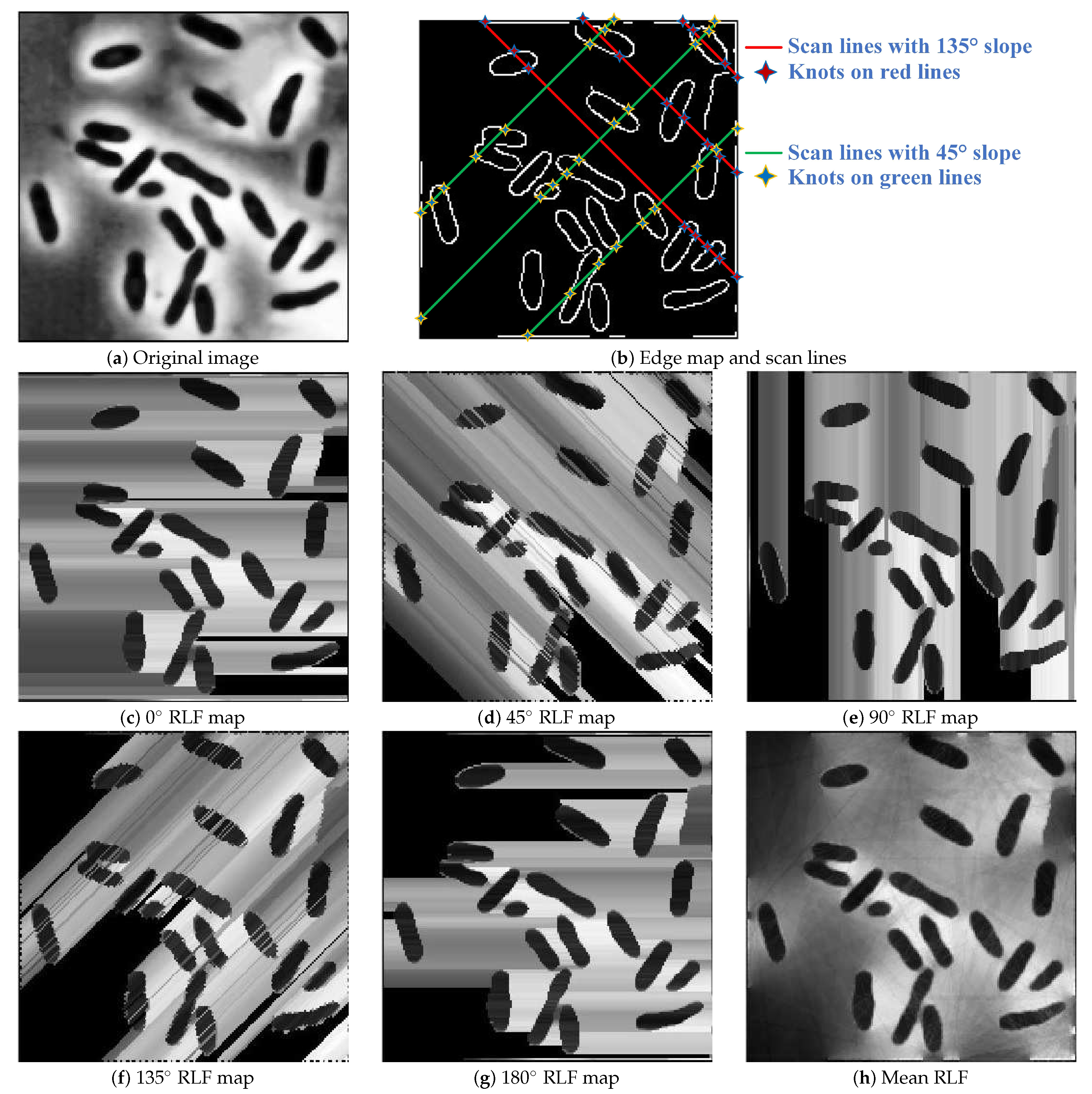

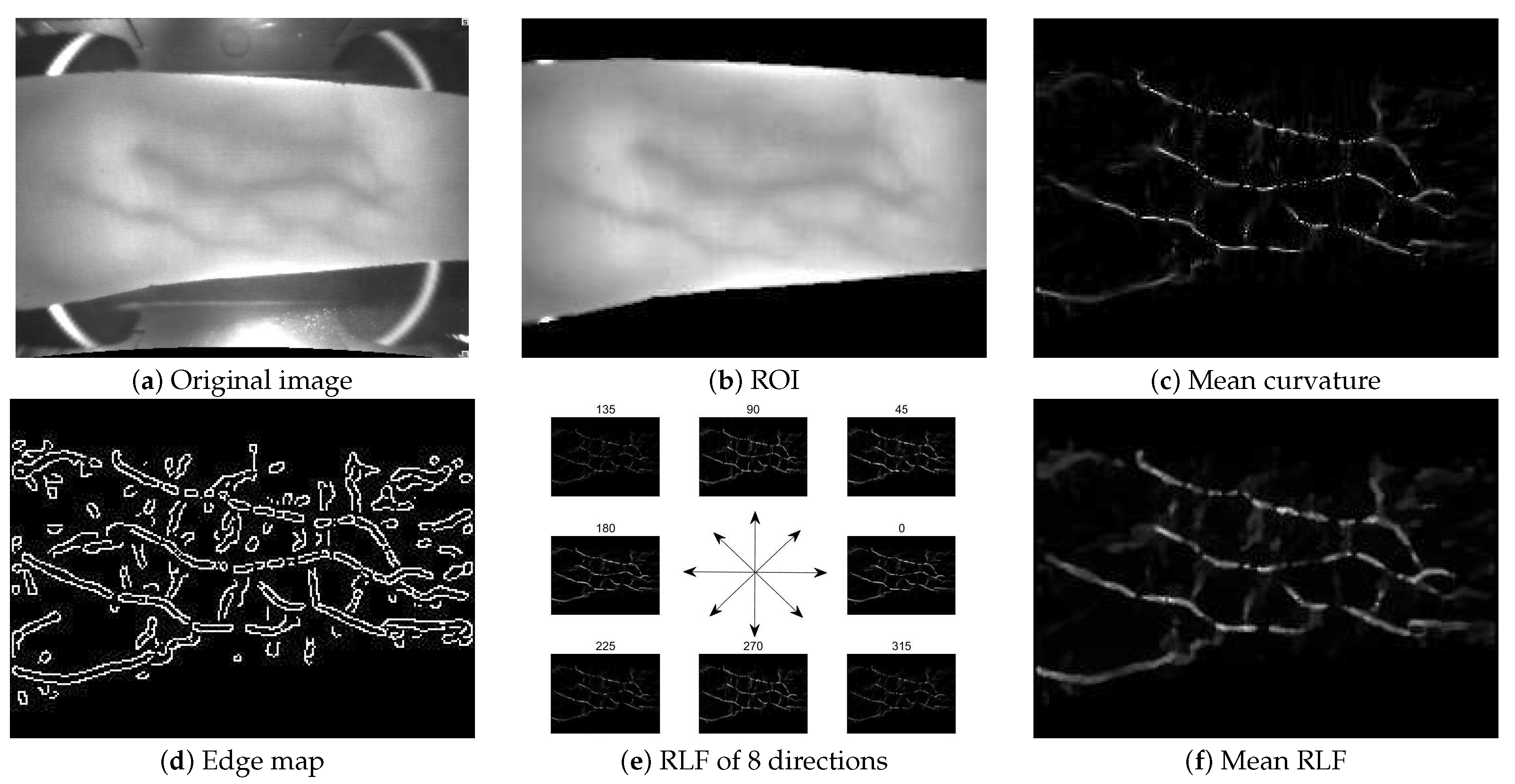

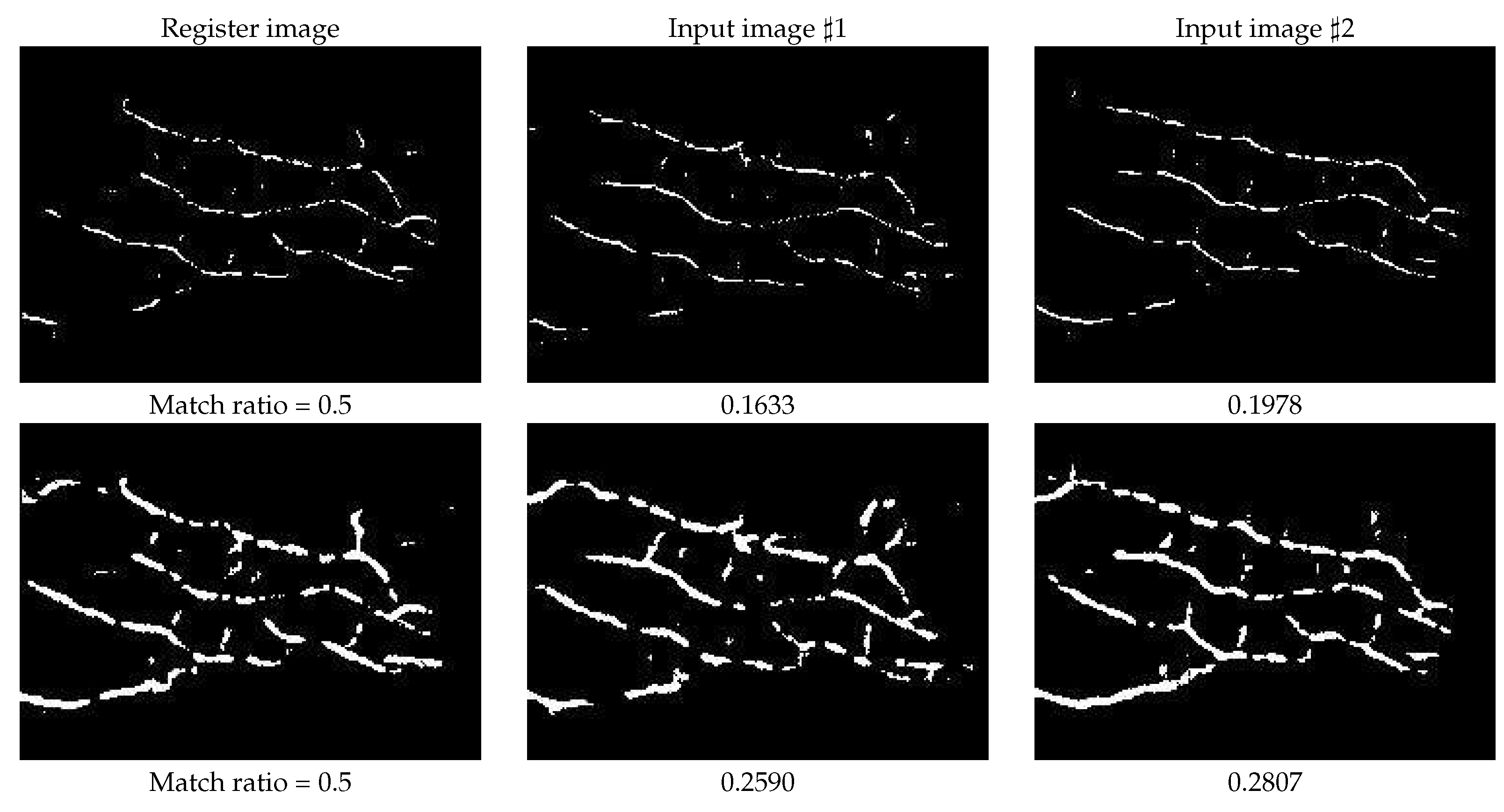
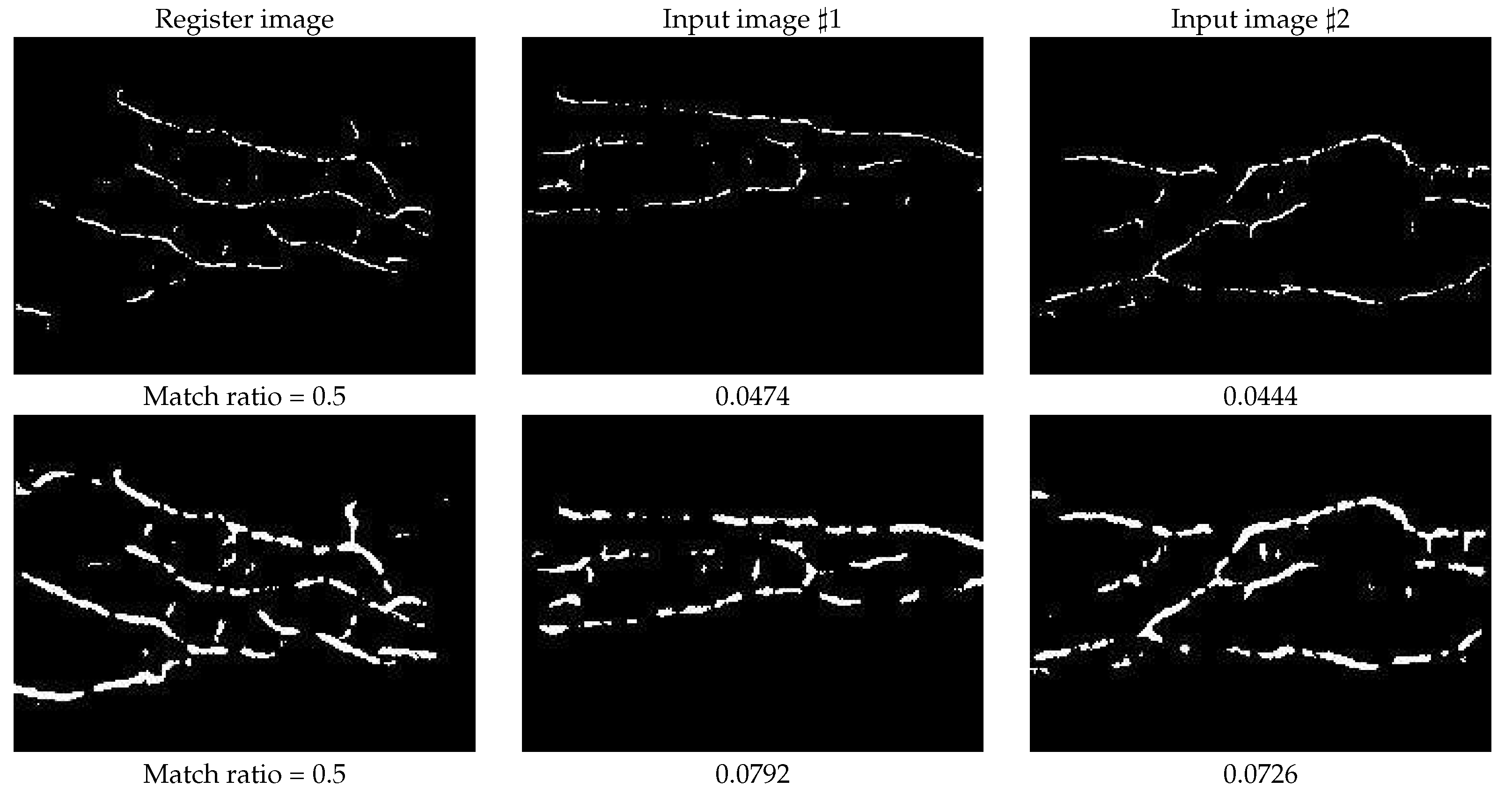
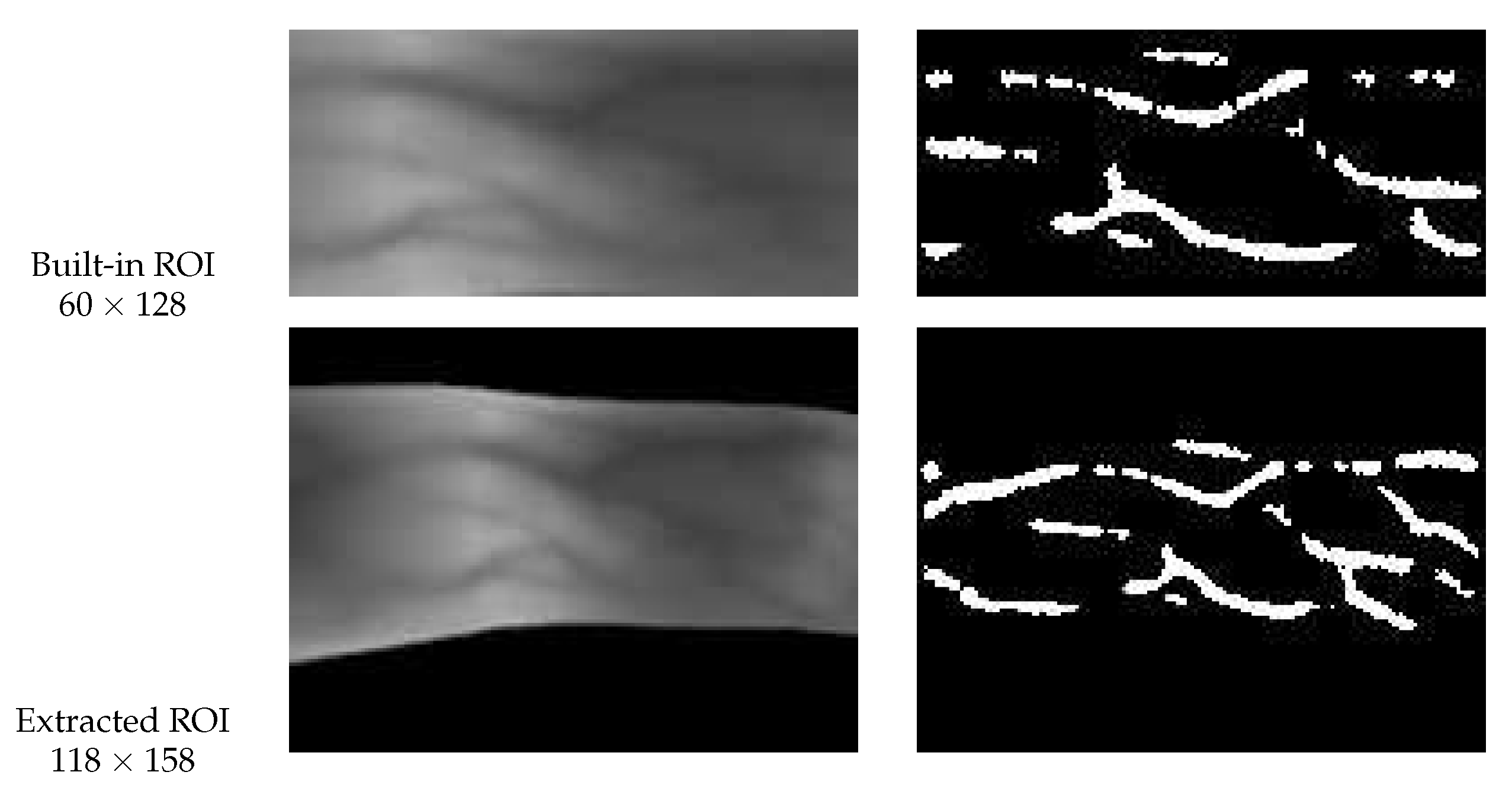
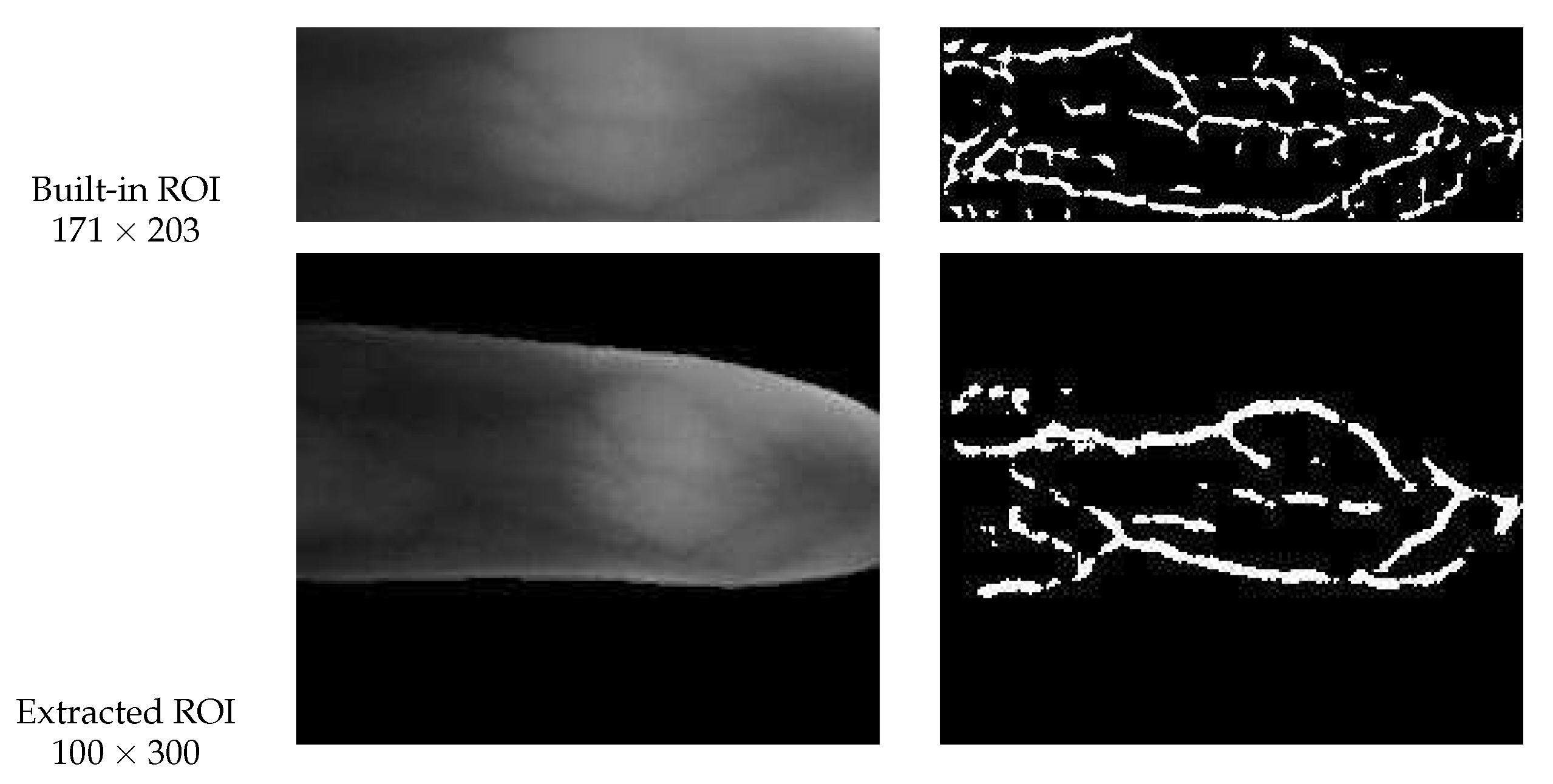
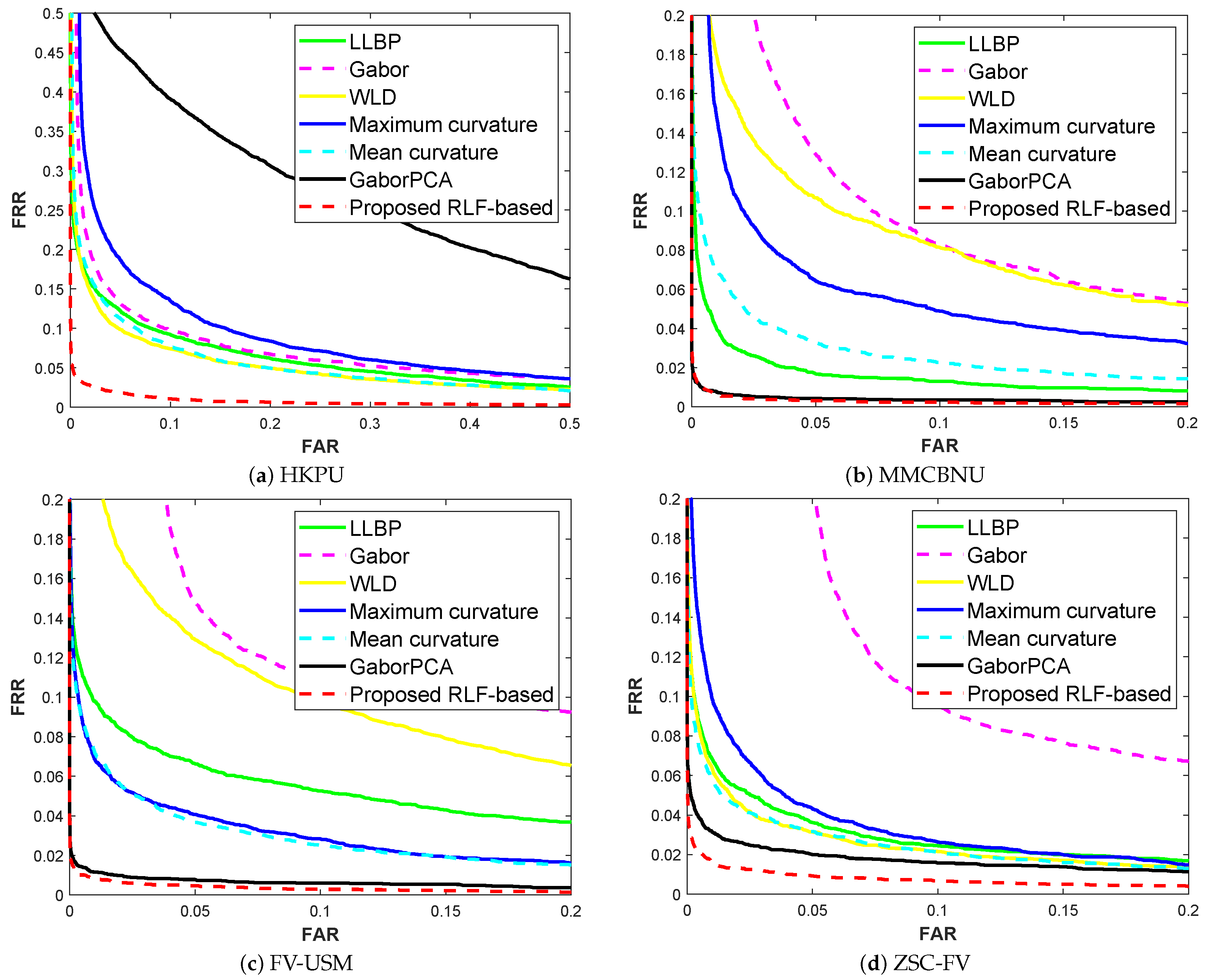
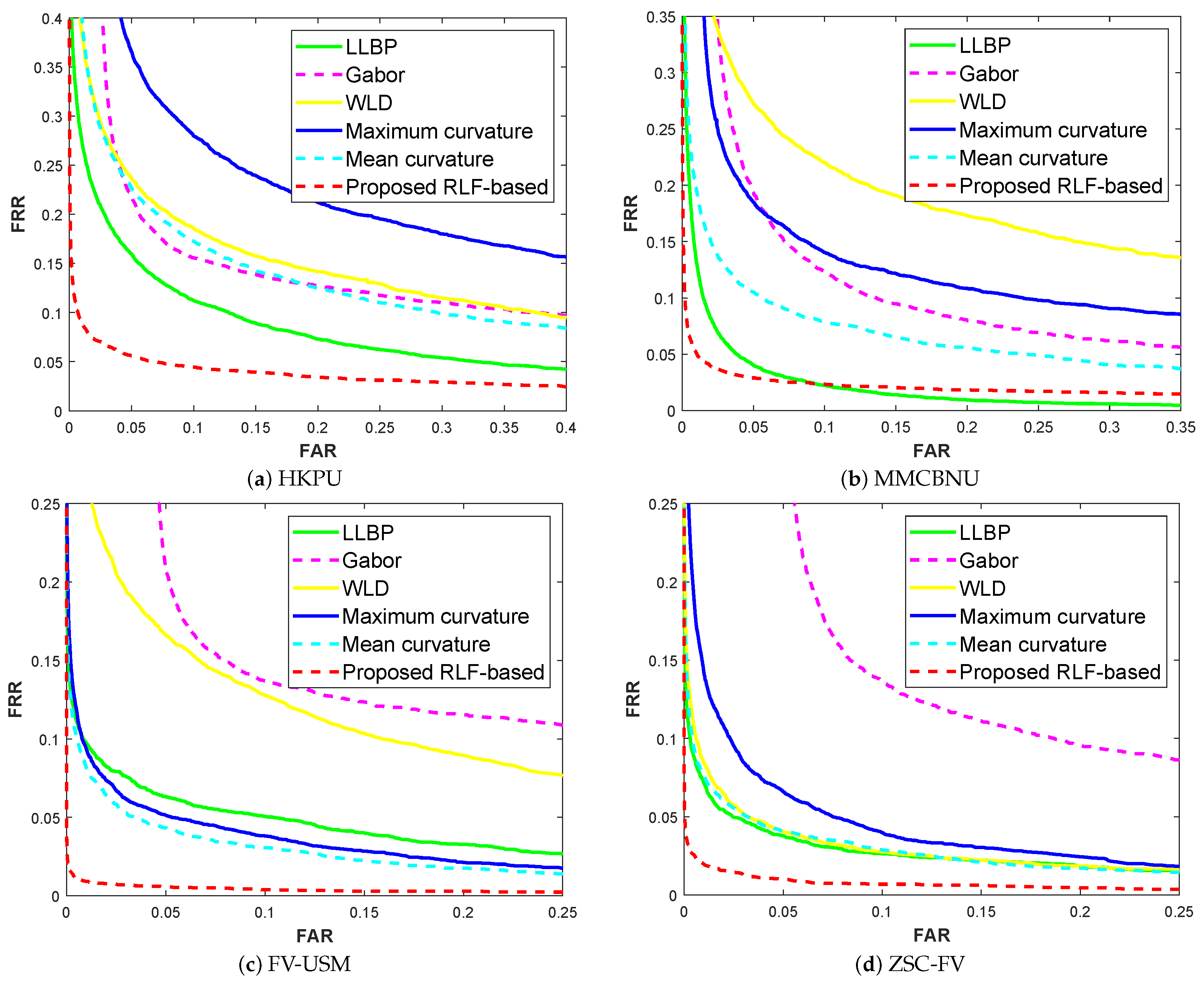
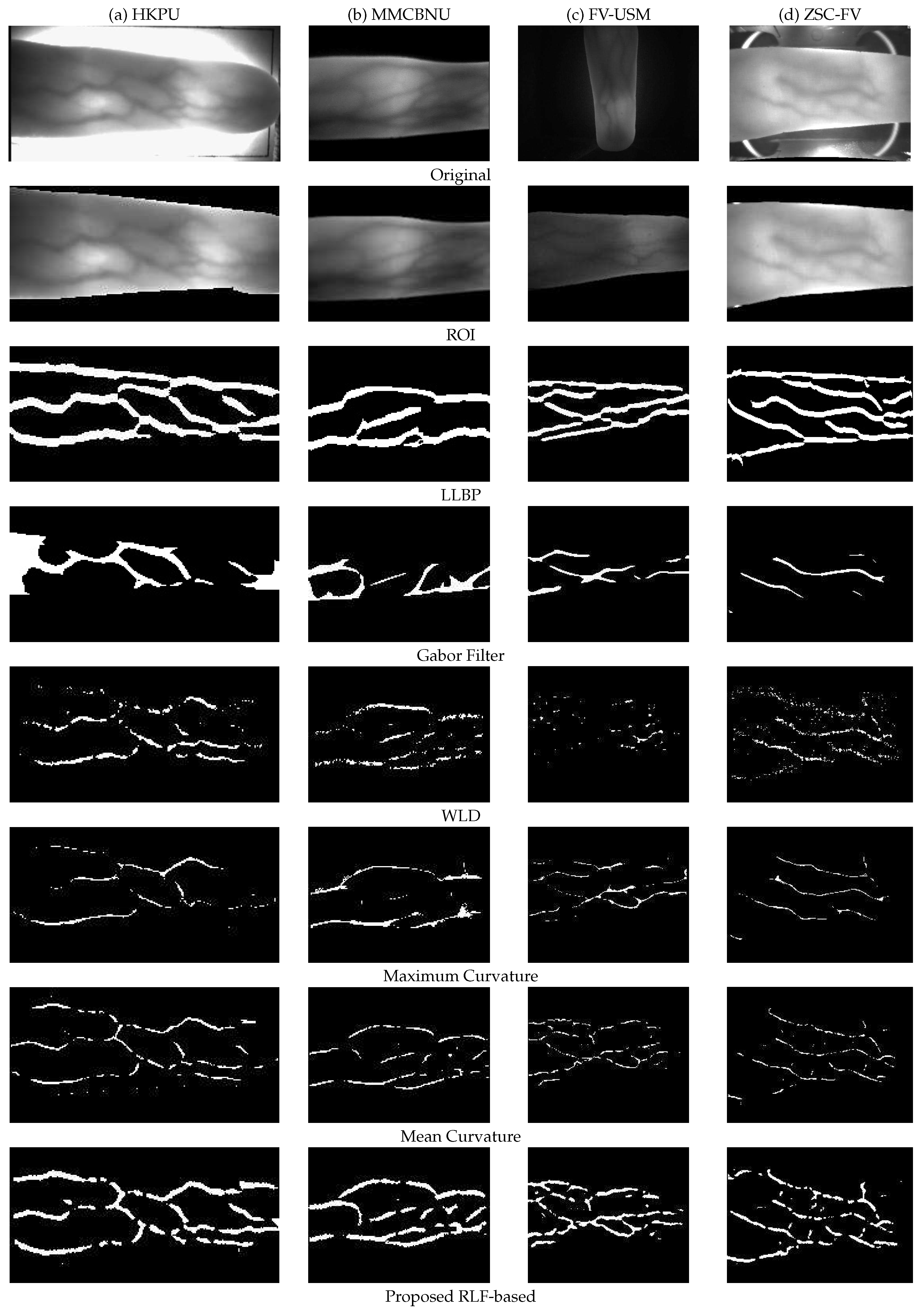
| Databases | HKPU | MMCBNU | FV-USM | ZSC-FV |
|---|---|---|---|---|
| Num of individuals | 156 | 100 | 123 | 1030 |
| Fingers | index, middle | index, middle, ring | index, middle | index, middle, ring |
| Hands | left | left, right | left, right | left, right |
| Num of images per finger | 6/12 | 10 | 12 | 6 |
| Sessions | 2 | 1 | 2 | 1 |
| Num of finger classes | 312 | 600 | 492 | 6180 |
| Total num of images | 3132 | 6000 | 5904 | 37,080 |
| Image size | ||||
| Scaled image size |
| HKPU | MMCBNU | FV-USM | ZSC-FV | ||||
|---|---|---|---|---|---|---|---|
| Built-In | Extracted | Built-In | Extracted | Built-In | Extracted | Extracted | |
| ROI | ROI | ROI | ROI | ROI | ROI | ROI | |
| = 5, = 5 | – | – | 2.12% | – | 4.28% | – | – |
| = 10, = 10 | 21.12% | 2.55% | 2.36% | 1.60% | 1.93% | 0.74% | 2.02% |
| = 20, = 20 | 10.60% | 2.28% | 18.82% | 0.77% | 1.68% | 0.76% | 1.43% |
| = 30, = 30 | 5.90% | 2.49% | – | 0.78% | 5.56% | 0.87% | 1.39% |
| = 40, = 40 | 4.72% | 5.47% | – | 0.93% | 26.87% | 0.93% | 1.69% |
| = 50, = 50 | 4.23% | – | – | – | – | – | 2.32% |
| Databases | LLBP | Gabor Filter | WLD | Maximum Curvature | Mean Curvature | GaborPCA | Proposed RLF-Based |
|---|---|---|---|---|---|---|---|
| HKPU | 9.39% | 9.82% | 8.04% | 12.02% | 8.56% | 26.7% | 2.49% |
| MMCBNU | 2.59% | 9.01% | 8.69% | 5.99% | 3.79% | 0.84% | 0.78% |
| FV-USM | 6.16% | 10.76% | 9.89% | 4.32% | 4.08% | 1.14% | 0.87% |
| ZSC-FV | 4.06% | 9.76% | 3.62% | 4.55% | 3.63% | 2.47% | 1.39% |
| Databases | LLBP | Gabor Filter | WLD | Maximum Curvature | Mean Curvature | Proposed RLF-Based |
|---|---|---|---|---|---|---|
| HKPU | 10.86% | 14.14% | 15.6% | 20.87% | 14.64% | 5.47% |
| MMCBNU | 4.46% | 11.29% | 17.85% | 12.81% | 8.39% | 3.3% |
| FV-USM | 5.99% | 12.87% | 11.79% | 5.10% | 4.51% | 0.93% |
| ZSC-FV | 4.11% | 12.28% | 4.37% | 5.93% | 4.37% | 1.69% |
| Databases | Image Size | LLBP | Gabor Filter | WLD | Maximum Curvature | Mean Curvature | Proposed RLF-Based |
|---|---|---|---|---|---|---|---|
| HKPU | 254.6 | 72.3 | 39.7 | 231.2 | 4.4 | 104 | |
| MMCBNU | 141.8 | 40 | 30.1 | 182.3 | 3.4 | 66.7 | |
| FV-USM | 232.3 | 105.2 | 58 | 343.9 | 5.0 | 102.1 | |
| ZSC-FV | 377.4 | 96 | 70 | 400.6 | 6.5 | 143 |
Publisher’s Note: MDPI stays neutral with regard to jurisdictional claims in published maps and institutional affiliations. |
© 2021 by the authors. Licensee MDPI, Basel, Switzerland. This article is an open access article distributed under the terms and conditions of the Creative Commons Attribution (CC BY) license (http://creativecommons.org/licenses/by/4.0/).
Share and Cite
Yao, Q.; Song, D.; Xu, X.; Zou, K. A Novel Finger Vein Recognition Method Based on Aggregation of Radon-Like Features. Sensors 2021, 21, 1885. https://doi.org/10.3390/s21051885
Yao Q, Song D, Xu X, Zou K. A Novel Finger Vein Recognition Method Based on Aggregation of Radon-Like Features. Sensors. 2021; 21(5):1885. https://doi.org/10.3390/s21051885
Chicago/Turabian StyleYao, Qiong, Dan Song, Xiang Xu, and Kun Zou. 2021. "A Novel Finger Vein Recognition Method Based on Aggregation of Radon-Like Features" Sensors 21, no. 5: 1885. https://doi.org/10.3390/s21051885
APA StyleYao, Q., Song, D., Xu, X., & Zou, K. (2021). A Novel Finger Vein Recognition Method Based on Aggregation of Radon-Like Features. Sensors, 21(5), 1885. https://doi.org/10.3390/s21051885








